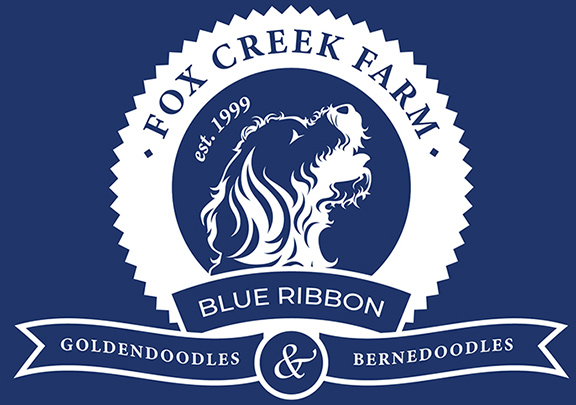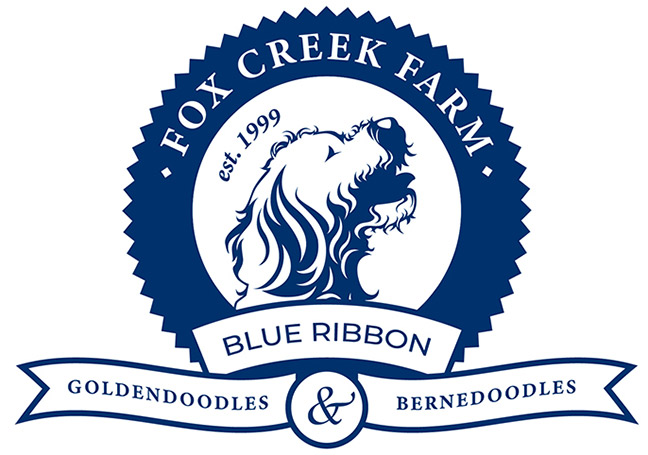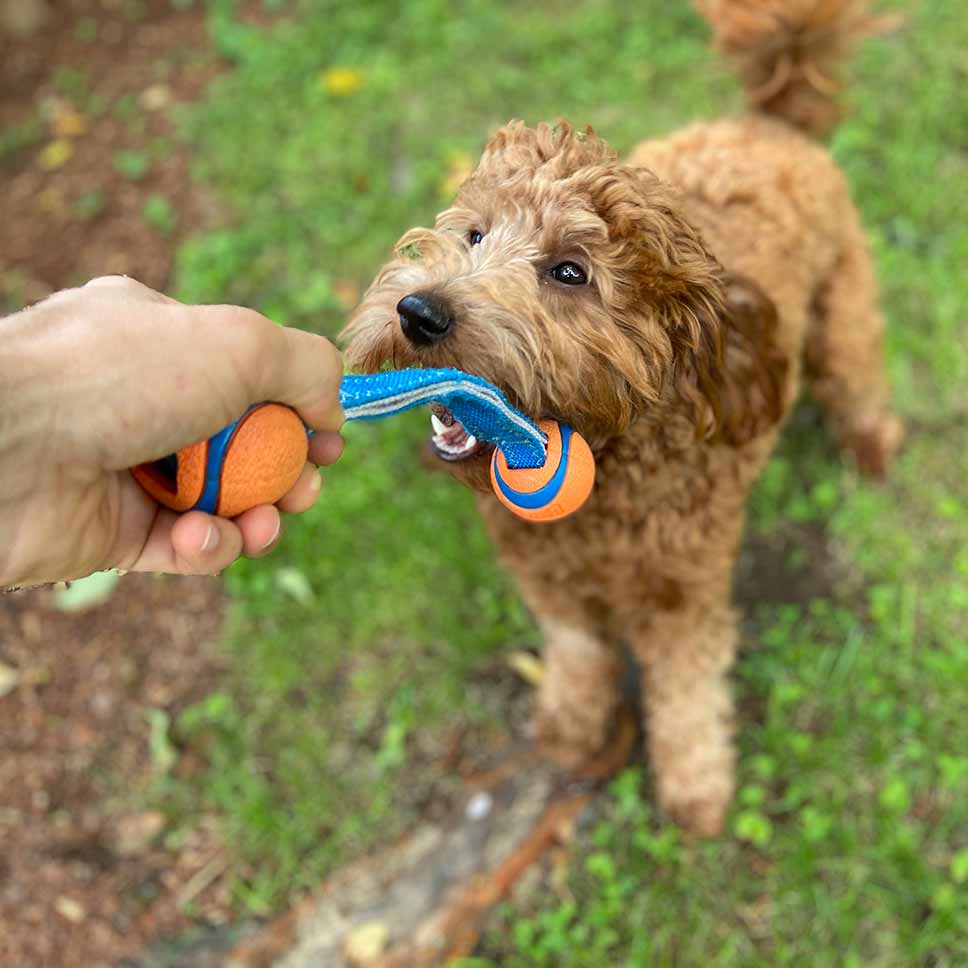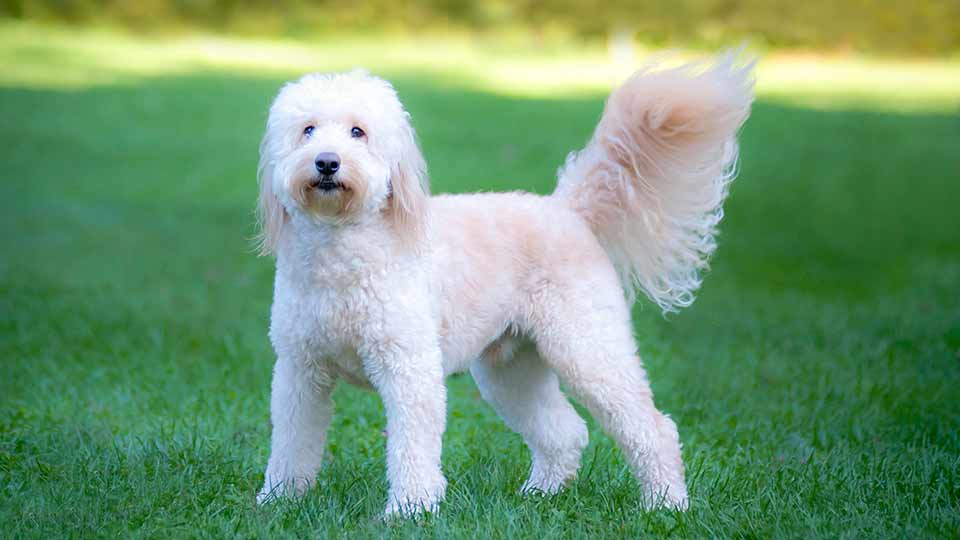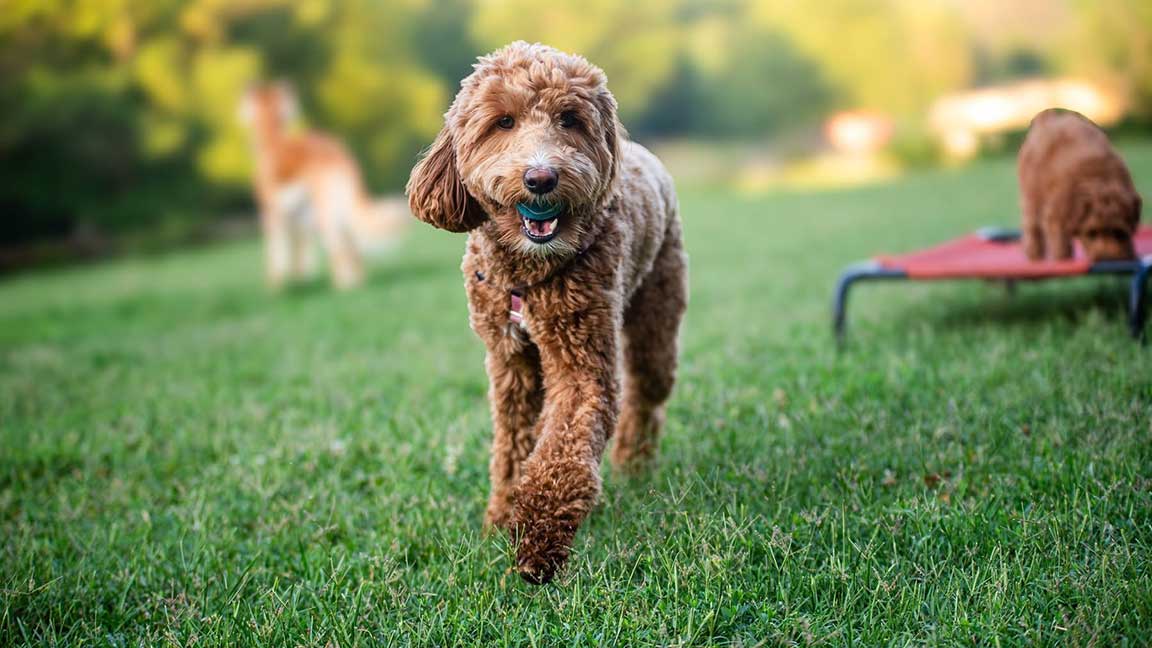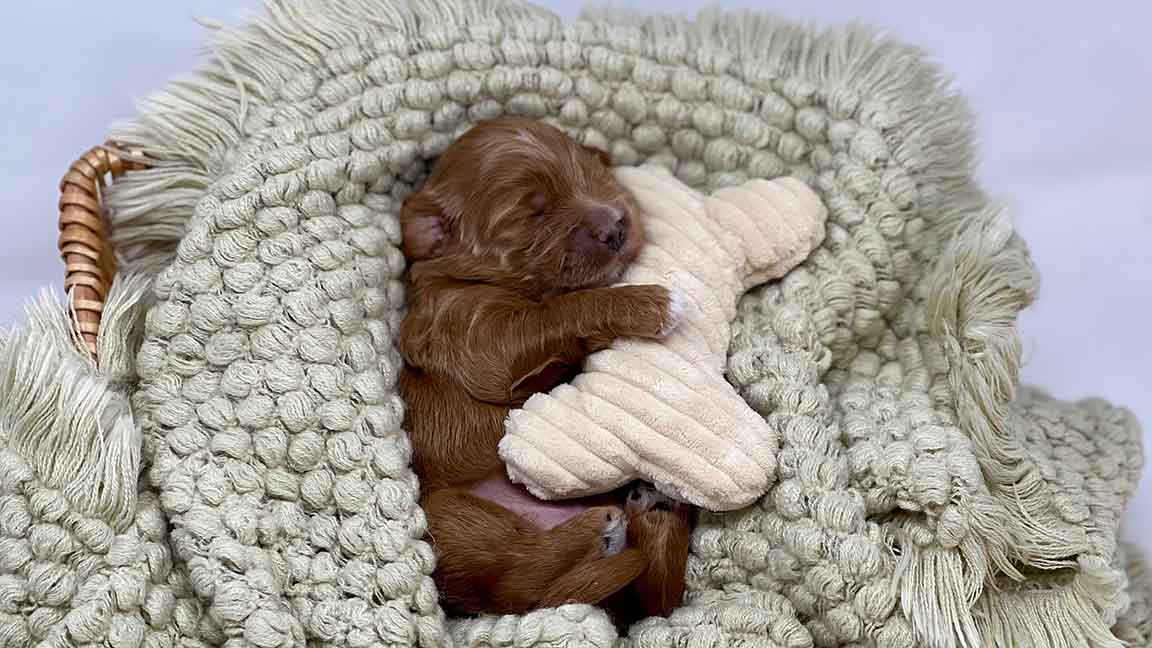
Using Positive Reinforcement to Discipline Your Goldendoodle
Are you a proud pet parent of a charming Goldendoodle puppy? Or are you considering adding one to your family soon? Either way, one of your most vital responsibilities is to ensure your puppy grows up learning good behavior while avoiding unwanted ones. Today, we delve into a subject close to every pet parent’s heart: How to use positive reinforcement to discipline your Goldendoodle puppy.
Traditional methods of discipline, like physical punishment, often miss the mark and can even lead to more bad behavior. But fret not; positive reinforcement opens a new door to better understanding and communication between you and your adorable four-legged friend. This blog post aims to be your comprehensive guide to employing positive reinforcement methods that are both humane and effective.
So, let’s embark on this journey together to create a harmonious living space filled with love, mutual respect, and well-behaved Goldendoodles.
The Science Behind Positive Reinforcement
Understanding why positive reinforcement works so well starts with a basic grasp of operant conditioning—from psychologist B.F. Skinner. This theory helps explain how behavior is learned and can be modified over time.
- Operant Conditioning: This is a method of learning that occurs through rewards and punishments. In the case of your Goldendoodle, rewarding good behavior makes it more likely to be repeated.
- Positive Reinforcement: This involves adding something pleasant, like a treat or verbal praise, immediately following a desirable behavior. The result? Your dog will associate good behavior with positive outcomes.
- Positive vs. Negative Reinforcement: Understanding the difference between the two is crucial. While positive reinforcement adds something pleasant to encourage behavior, negative reinforcement involves removing something unpleasant. Both can be effective, but positive reinforcement is generally more humane and enjoyable for your pet.
So, why does positive reinforcement work so well?
- Clarity: It communicates what you want your dog to do, unlike punishing bad behavior, which can be confusing.
- Builds Trust: Reward systems help to strengthen the bond between you and your Goldendoodle.
- Sustainability: Positive methods are more likely to produce long-term behavioral changes than punitive methods.
Next, we’ll provide you with our top 10 tips for disciplining your Goldendoodle puppy using positive reinforcement. Keep reading for actionable advice and strategies!
Top 10 Tips for Disciplining Your Goldendoodle Puppy Using Positive Reinforcement
So you’re convinced that positive reinforcement is the way to go—excellent! Now, let’s dive into the nitty-gritty with our top 10 tips to help you instill good behavior in your Goldendoodle puppy.
- Start Early: The sooner you begin training your puppy, the easier it will be to instill desirable behaviors. Young dogs are like sponges, eager to learn!
- Reward Systems: Use a variety of rewards—treats, toys, and verbal praises—to reinforce good behavior. The key is to reward immediately after the behavior occurs.
- Crate Training: This can be an effective method for house training and can also serve to enforce positive behaviors when used correctly.
- Token Economy: Establish a point or token system for larger behavioral goals. Tokens can later be exchanged for a larger reward.
- Potty Training: Consistent positive reinforcement is crucial for successful potty training. Always reward your puppy for doing their business in the designated area.
- Reinforcement in the Classroom: If you’re enrolling your Goldendoodle in a training class, ensure the instructor uses positive reinforcement techniques.
- Ignoring Unwanted Behavior: Sometimes, the best reaction to bad behavior is no reaction. Ignoring your puppy when they act out can be an effective method for reducing unwanted actions.
- Hyper Goldendoodle: High energy levels can be a challenge. Utilize positive reinforcement to teach your hyperactive Goldendoodle to channel their energy into acceptable outlets.
- Mini Goldendoodle Behavior: If you have a mini Goldendoodle, understand that they may have specific needs and tendencies that differ from their larger counterparts. Adapt your reinforcement techniques accordingly.
- Never Hit a Dog: It can’t be stressed enough—physical punishment is inhumane and counterproductive. Always opt for positive methods to correct behavior.
By diligently applying these tips and techniques, you’ll be shaping your Goldendoodle’s behavior and fostering a lifelong bond built on mutual trust and respect.
Caring for Your Goldendoodle Beyond Training
Training your Goldendoodle puppy is an essential aspect of pet parenthood, but it’s not the only one. Understanding your Goldendoodle’s personality and catering to its unique needs can help discipline and raise a happy, well-rounded dog.
Understand Your Goldendoodle’s Personality
- Temperament: Goldendoodles are known for their friendly, outgoing nature. Recognize this as a base for your training efforts.
- Learning Curve: Each dog has a different learning speed. Be patient and adjust your training pace accordingly.
Regular Exercise and Mental Stimulation
- Physical Activity: Goldendoodles are energetic breeds. Ensure they get plenty of physical exercise to keep destructive behavior at bay.
- Mental Exercises: Brain games and puzzles can help keep your Goldendoodle mentally stimulated, reducing unwanted behavior.
A Balanced Diet
- Nutrition: A balanced diet contributes to better behavior and overall well-being. Consult your breeder or vet for personalized dietary advice.
Health Check-Ups
- Regular Visits: Frequent vet visits ensure that potential health issues affecting behavior are caught early on.
Emotional Well-being
- Socialization: Proper socialization from a young age can significantly impact your dog’s behavior and how they interact with humans and other animals.
Understanding and caring for your Goldendoodle goes together with practical positive reinforcement training. When both are in sync, you’re on the path to raising a loving, well-behaved pet.
Shopping for Supplies
Preparing your home with the proper supplies is crucial for practical positive reinforcement training. Here are some general items to make your training sessions as successful as possible:
Treats
- Quality Matters: Choose high-quality, nutritious treats as rewards for good behavior. They should be small enough for quick consumption.
Toys
- Variety is Key: Different types of toys—plush toys, chew toys, puzzle toys—can serve as excellent positive reinforcers.
Training Clicker
- Instant Feedback: A clicker can provide immediate feedback, helping your dog associate good behavior with positive outcomes.
Leash and Collar
- Safety First: Opt for a sturdy, comfortable leash and collar. These are essential for various training activities, including walking and obedience training.
Crate
- Safe Space: A well-sized crate provides a secure environment for your puppy and aids in crate training.
Exercise Pen
- Controlled Environment: These are useful for creating a safe space where your Goldendoodle can play and you can apply positive reinforcement techniques.
With readily available supplies, you’ll be well-prepared to implement an effective favorable reinforcement training regime for your Goldendoodle puppy.
- Why Traditional Methods Don’t Work: Physical punishment can be ineffective and harmful, creating a cycle of confusion and bad behavior.
- The Science Behind Positive Reinforcement: Employing the principles of operant conditioning can offer a humane and effective way to discipline your puppy.
- Top 10 Tips: These tips are your go-to guidelines for effective discipline through positive reinforcement, from starting early to never resorting to hitting.
- Caring for Your Goldendoodle Beyond Training: Understanding your dog’s unique personality and needs can significantly improve the effectiveness of your training efforts.
- Shopping for Supplies: Preparing with the right supplies, such as high-quality treats and toys, ensures you’re well-equipped for the training journey ahead.
By diligently applying the principles of positive reinforcement, you’re doing more than just teaching your Goldendoodle to behave—you’re also building a strong, loving, and respectful relationship with your furry friend.
Advanced Techniques in Positive Reinforcement for Your Goldendoodle Puppy
Suppose you’ve already mastered the basics of positive reinforcement with your Goldendoodle. In that case, you might be wondering what the next steps should be. Here, we’ll explore advanced techniques to help you achieve even more significant behavioral milestones with your beloved pet.
Consistency is Key
- Uniform Cues: Ensure everyone uses the same commands and rewards to avoid confusing your puppy.
- Timing Matters: Deliver the reward immediately after the desirable behavior occurs to reinforce the association between the action and the reward.
Layering Commands
- Sequential Training: Start with simple commands like “sit” or “stay” and gradually introduce more complex sequences, like “sit and paw,” rewarding each step along the way.
Premack Principle
- High-Probability Behaviors: Utilize naturally occurring high-probability behaviors (e.g., chasing a ball) to reinforce less likely behaviors (e.g., sitting still).
Understanding the Premack Principle in Dog Training
The Premack Principle, named after psychologist David Premack, is often called “Grandma’s Law.” In simple terms, it’s the idea that a more probable behavior (eating dessert) can reinforce a less likely behavior (eating vegetables). In the context of dog training, the Premack Principle suggests that you can use a high-probability behavior to encourage the performance of a low-probability behavior.
How Does It Work?
- Identify High-Probability Behaviors: These are actions that your Goldendoodle naturally enjoys and is likely to perform without any prompting, such as chasing a ball or going for a walk.
- Identify Low-Probability Behaviors: You want to encourage these actions that your dog is less naturally inclined to perform, like sitting still when someone comes to the door.
Practical Applications
- Door Manners: If your Goldendoodle loves going outside, you can use this high-probability behavior to reinforce sitting calmly. At the same time, you open the door (low-probability behavior).
- Recall Training: If your dog enjoys playing fetch, use the opportunity to practice recalls. Toss the ball (high-probability behavior) only when your dog returns to you upon being called (low-probability behavior).
- Leash Training: If your dog loves sniffing around, let them sniff (high-probability behavior) only when they walk beside you without pulling (low-probability behavior).
Tips for Success
- Immediate Reward: Just like with other forms of positive reinforcement, timing is crucial. The high-probability behavior should immediately follow the low-probability one.
- Consistency: Be consistent in your application of the Premack Principle. The more frequently the low-probability behavior is reinforced by the high-probability one, the more ingrained it will become.
- Context Matters: What counts as high-probability behavior might change depending on the situation, so be flexible in your approach.
Understanding and effectively utilizing the Premack Principle can make your positive reinforcement efforts even more successful. It’s an excellent way to add nuance to your training strategies and encourage your Goldendoodle to engage in behaviors they may not naturally be inclined to perform.
Differential Reinforcement
- Selective Rewarding: Use different rewards for different levels of good behavior. A simple “Good dog!” might suffice for sitting, while a special treat could be used for a more challenging trick.
Mastering Differential Reinforcement for Your Goldendoodle Puppy
Differential reinforcement is a specialized form of positive reinforcement that selectively rewards specific behaviors while ignoring or not reinforcing others. The concept focuses on encouraging desirable actions over less desired ones, offering a more nuanced approach to training your Goldendoodle puppy.
Types of Differential Reinforcement
- Differential Reinforcement of Incompatible Behavior (DRI): Reward behaviors that cannot co-occur with unwanted behavior. For example, rewarding your dog for sitting can be separate from jumping on guests.
- Differential Reinforcement of Other Behavior (DRO): Reward your dog when they refrain from exhibiting unwanted behavior for a set period. For instance, you might give a treat for not barking at the mail carrier for over five minutes.
- Differential Reinforcement of Alternative Behavior (DRA): Reinforce a specific alternative to undesirable behavior. For example, you are teaching your dog to go to their bed instead of begging at the dinner table.
- Differential Reinforcement of Low Rates (DRL): Used to reduce a frequent behavior but not eliminate it. You could use DRL for behaviors like whining by rewarding your dog when the whining is less frequent than a set threshold.
Practical Applications
- Barking Control: Reward quiet behavior with a special treat while ignoring barking. Gradually extend the quiet time required for a reward.
- Eliminating Jumping: Use DRI by rewarding your Goldendoodle for sitting whenever someone enters the house, making jumping less appealing.
- Leash Training: Apply DRA by rewarding your dog for walking beside you as an alternative to pulling on the leash.
Tips for Implementing Differential Reinforcement
- Selective Timing: The reward should immediately follow the desired behavior to strengthen the association.
- Value of Reward: Use higher-value rewards for more challenging or less natural behaviors to increase motivation.
- Consistency: Maintaining consistent cues and rewards is crucial for practical training.
- Phasing Out: As your Goldendoodle displays the desired behavior consistently, you can gradually lessen the frequency of treats, replacing them with other forms of positive reinforcement.
Mastering the art of differential reinforcement can offer you a more versatile toolkit for shaping the behavior of your Goldendoodle. Combined with other advanced techniques like the Premack Principle, differential reinforcement can supercharge your positive reinforcement training strategy.
“Catch Them Being Good”
- Spontaneous Rewards: Don’t just reward behavior during training sessions; catch your Goldendoodle doing something good spontaneously and reward them.
Clicker Training
- Precision: Once your dog understands that the clicker sound means a reward is coming, you can use it to mark the exact moment of good behavior, making the learning process quicker and more efficient.
Phasing Out Food Rewards
- Variable Reinforcement: As your puppy learns, you can gradually replace food rewards with other forms of positive reinforcement, like petting or playing.
By adopting these advanced techniques, you can continue to positively reinforce good behavior in your Goldendoodle more nuanced. This ensures that your pet is well-behaved, engaged, stimulated, and ever-learning.
As we wrap up this comprehensive guide on using positive reinforcement to discipline your Goldendoodle puppy, let’s recap the key points that we’ve covered:
- Why Traditional Methods Don’t Work: Physical punishment can be ineffective and harmful, creating a cycle of confusion and bad behavior.
- The Science Behind Positive Reinforcement: Employing the principles of operant conditioning can offer a humane and effective way to discipline your puppy.
- Top 10 Tips: These tips are your go-to guidelines for effective discipline through positive reinforcement, from starting early to never resorting to hitting.
- Caring for Your Goldendoodle Beyond Training: Understanding your dog’s unique personality and needs can significantly improve the effectiveness of your training efforts.
- Shopping for Supplies: Preparing with the right supplies, such as high-quality treats and toys, ensures you’re well-equipped for the training journey ahead.
By diligently applying the principles of positive reinforcement, you’re doing more than just teaching your Goldendoodle to behave—you’re also building a strong, loving, and respectful relationship with your furry friend.
We hope this guide has been informative and valuable for you. Stay tuned for more topics to help you become the best pet parent you can be.
